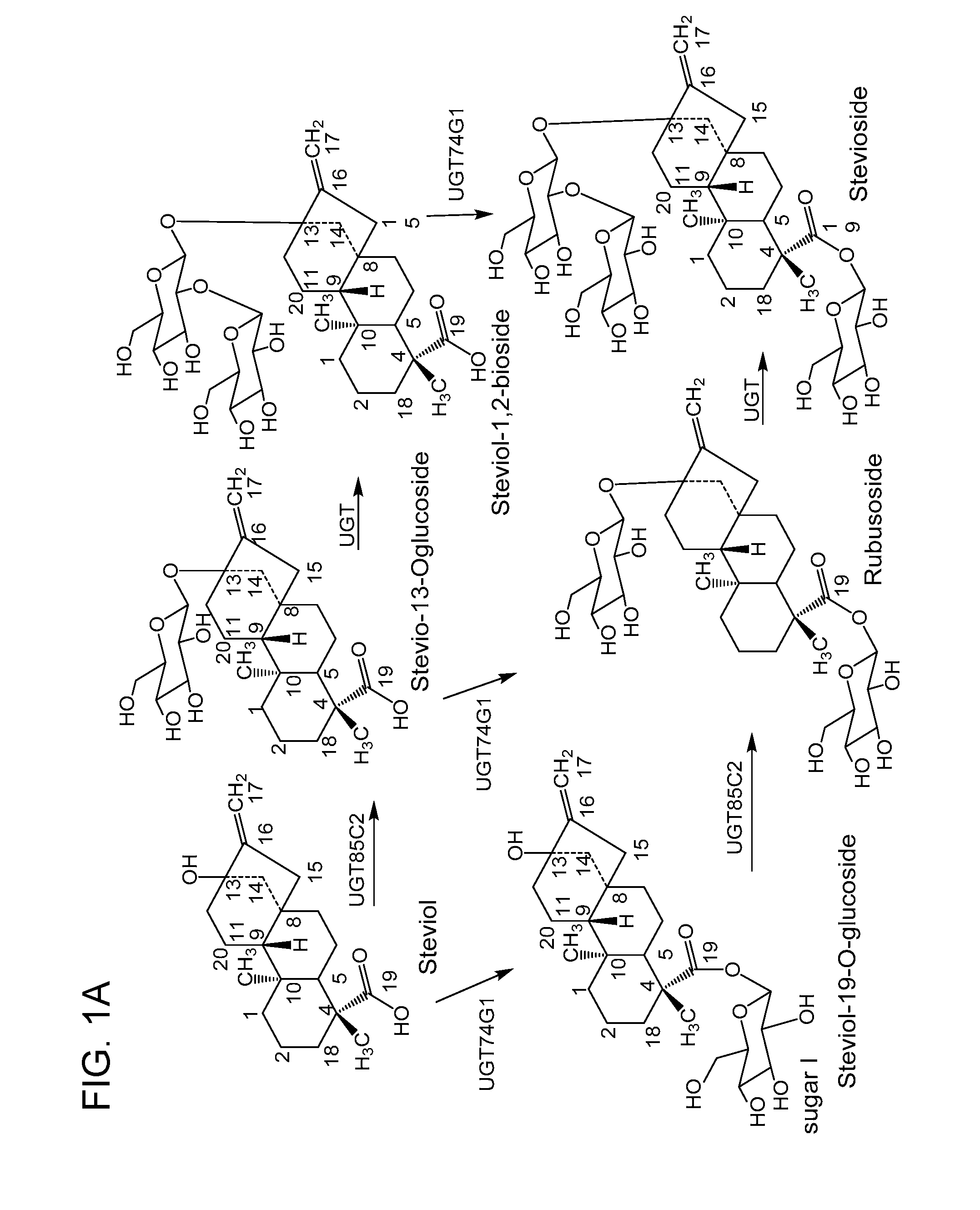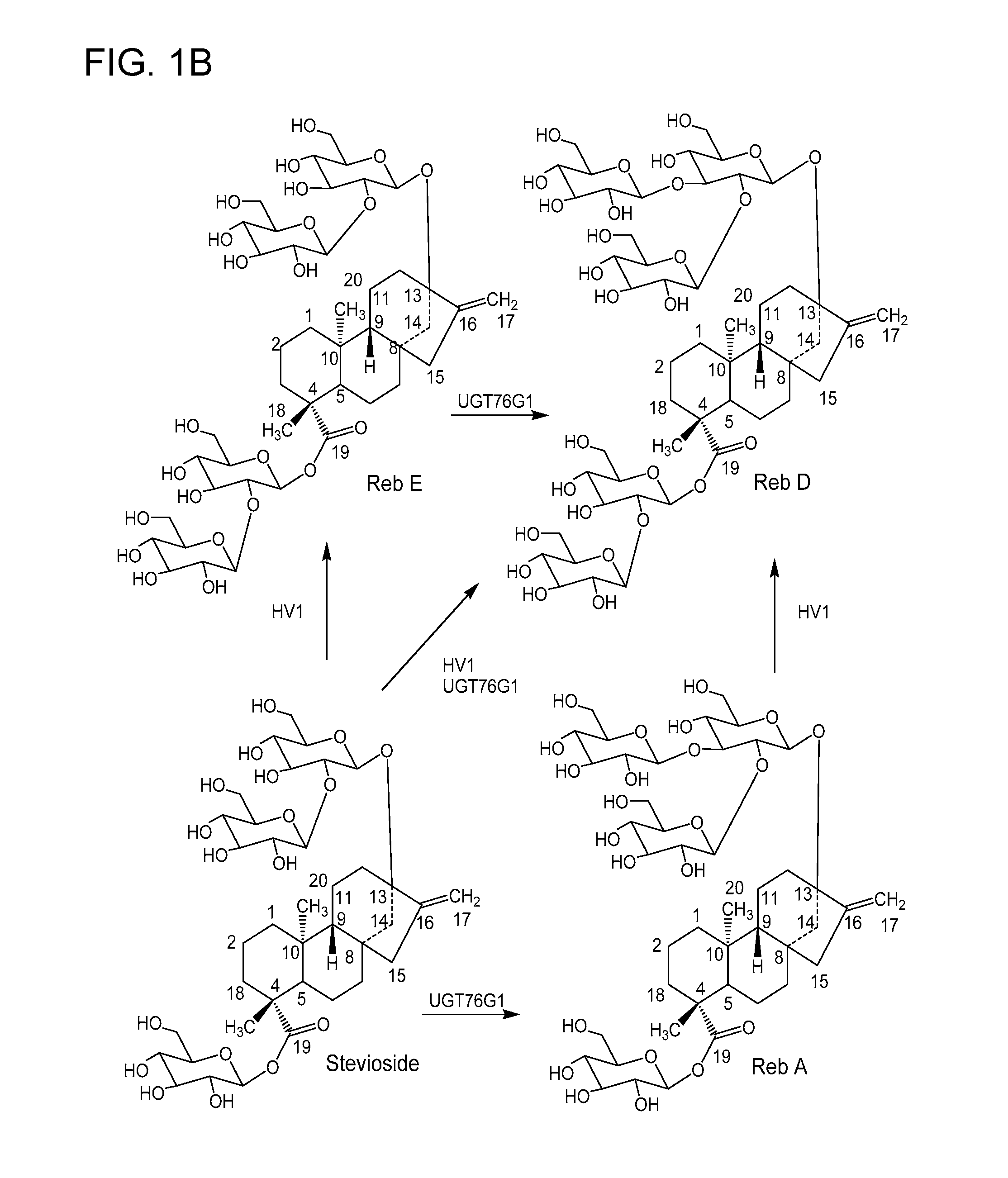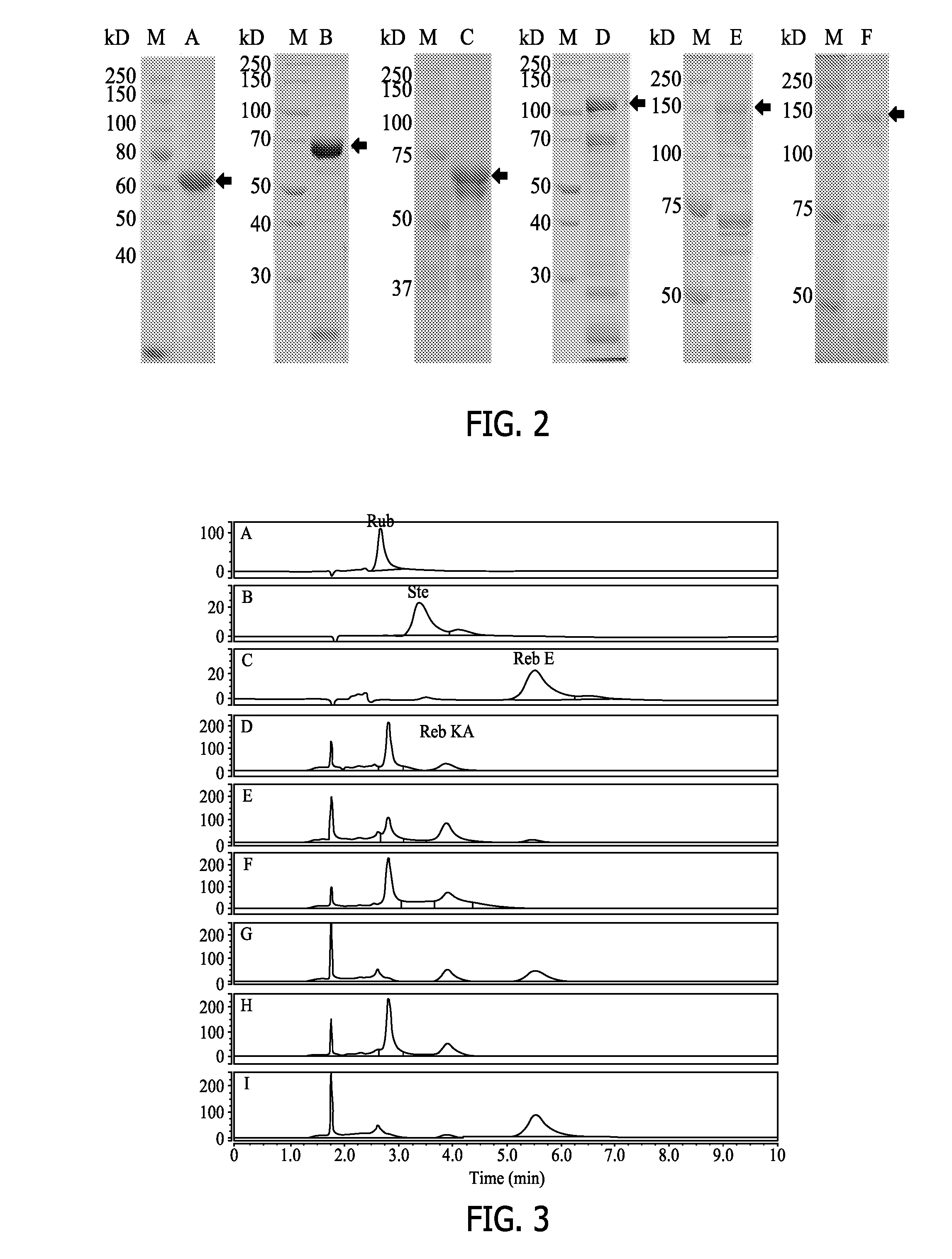Non-caloric sweeteners and methods for synthesizing
- Summary
- Abstract
- Description
- Claims
- Application Information
AI Technical Summary
Benefits of technology
Problems solved by technology
Method used
Image
Examples
example 1
[0249]In this Example, full-length DNA fragments of all candidate UGT genes were synthesized.
[0250]Specifically, the cDNAs were codon optimized for E. coli expression (Genscript, Piscataway, N.J.). The synthesized DNA was cloned into a bacterial expression vector pETite N-His SUMO Kan Vector (Lucigen). For the nucleotide sequence encoding the UDP-glycosyltransferase fusion enzymes (UGT76G1-AtSUS1 and EUGT11-AtSUS1), a GSG-linker (encoded by the nucleotide sequence: ggttctggt) was inserted in frame between a nucleotide sequence encoding the uridine diphospho glycosyltransferase domain and the nucleotide sequence encoding the sucrose synthase 1 from A. thaliana (AtSUS1). Table 2 summarizes the protein and sequence identifier numbers.
TABLE 2Sequence Identification Numbers.NameSEQ ID NODescriptionUGT76G1SEQ ID NO: 1Amino acidUGT76G1SEQ ID NO: 2Nucleic acidEUGT11SEQ ID NO: 3Amino acidEUGT11SEQ ID NO: 4Nucleic acidHV1SEQ ID NO: 5Amino acidHV1SEQ ID NO: 6Nucleic acidAtSUS1SEQ ID NO: 7Amino...
example 2
[0253]In this Example, candidate UGT recombinant polypeptides were assayed for glycosyltranferase activity by using tested steviol glycosides as the substrate.
[0254]Typically, the recombinant polypeptide (10 μg) was tested in a 200 μl in vitro reaction system. The reaction system contains 50 mM potassium phosphate buffer, pH 7.2, 3 mM MgCl2, 1 mg / ml steviol glycoside substrate, 1 mM UDP-glucose. The reaction was performed at 30° C. and terminated by adding 200 μl 1-butanol. The samples were extracted three times with 200 μL 1-butanol. The pooled fraction was dried and dissolved in 70 μL 80% methanol for high-performance liquid chromatography (HPLC) analysis. Rubusoside (99%, Blue California, Calif.), purified Reb G (98.8%), Reb KA (98.4%) and Reb V (80%) was used as substrate in in vitro reactions.
[0255]The UGT catalyzed glycosylation reaction was be coupled to a UDP-glucose generating reaction catalyzed by a sucrose synthase (such as AtSUS1). In this method, the UDP-glucose was gen...
example 3
[0257]In this Example, the recombinant HV1 polypeptides were analyzed for transferring a sugar moiety to rubusoside to produce rebaudioside KA (“Minor diterpene glycosides from the leaves of Stevia rebaudiana”. Journal of Natural Products (2014), 77(5), 1231-1235) in all reaction conditions with or without AtSUS1.
[0258]As shown in FIG. 3, the recombinant HV1 polypeptides transferred a sugar moiety to rubusoside to produce Reb KA in all reaction conditions with or without AtSUS1. Rubusoside was completely converted to Reb KA and Reb E by the recombinant HV1 in a UGT-SUS coupling reaction system (G, I). However, only partial rubososide was converted to Reb KA after 24 hours (H) by the recombinant HV1 polypeptide alone without being coupled to AtSUS1, indicating AtSUS1 enhanced the conversion efficiency in the UGT-SUS coupling system. In the HV1-AtSUS1 coupling reaction system, produced Reb KA can be continually converted to Reb E.
PUM
| Property | Measurement | Unit |
|---|---|---|
| Fraction | aaaaa | aaaaa |
| Fraction | aaaaa | aaaaa |
| Fraction | aaaaa | aaaaa |
Abstract
Description
Claims
Application Information
 Login to View More
Login to View More - R&D
- Intellectual Property
- Life Sciences
- Materials
- Tech Scout
- Unparalleled Data Quality
- Higher Quality Content
- 60% Fewer Hallucinations
Browse by: Latest US Patents, China's latest patents, Technical Efficacy Thesaurus, Application Domain, Technology Topic, Popular Technical Reports.
© 2025 PatSnap. All rights reserved.Legal|Privacy policy|Modern Slavery Act Transparency Statement|Sitemap|About US| Contact US: help@patsnap.com



